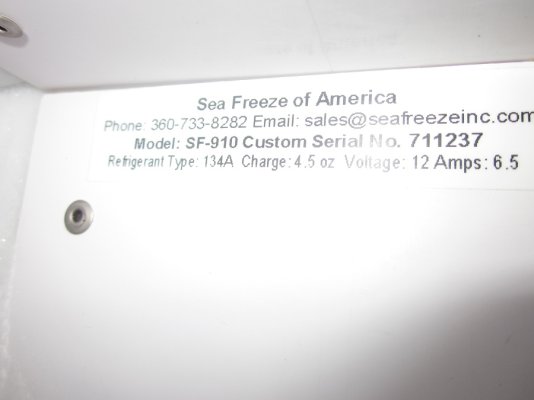These are Schrader valve connections, right?
Put gas in the one labeled suction or low pressure.
You don't have gauges so don't worry about the pressure. It varies with temperature anyway and whether the unit is running and you have to know what it means which I suspect you may not so don't freak out about it despite all the expert advice flying around.
Before you tighten the connection to the suction fitting on the compressor, crack the valve on your little can just enough to hear a hiss at the compressor. That gets rid of the air in the tube between the two.
With the unit running, give it a quick shot of gas and feel the evaporator coil to see if it is getting colder. If it is give it another quick shot and let it run for a while. If the performance is good, disconnect and see how long it lasts. If nothing changes then you have other problems and can choose for yourself how to handle it.
Why am I doing this? {/QUOTE]
Because you want to learn something about fixing your own boat problems, and it feels good to be a bit more self-sufficient, it might save money, and you will be impressed to no end with your new found skills and confidence. As long as you are careful and do a bit of reading beforehand there isn't much of a downside despite what you might read here.
Good luck and be careful.
Thanks Rick, I'll give it a shot and report back. The gas I bought does have a gauge on it, and while I can probably find the pressure in the specs, do you know the range I should target? Finally, I take it that I don't need to crack the discharge port, just pressurize the suction side a bit? Do you know what the process port is used for? Initial setup?





